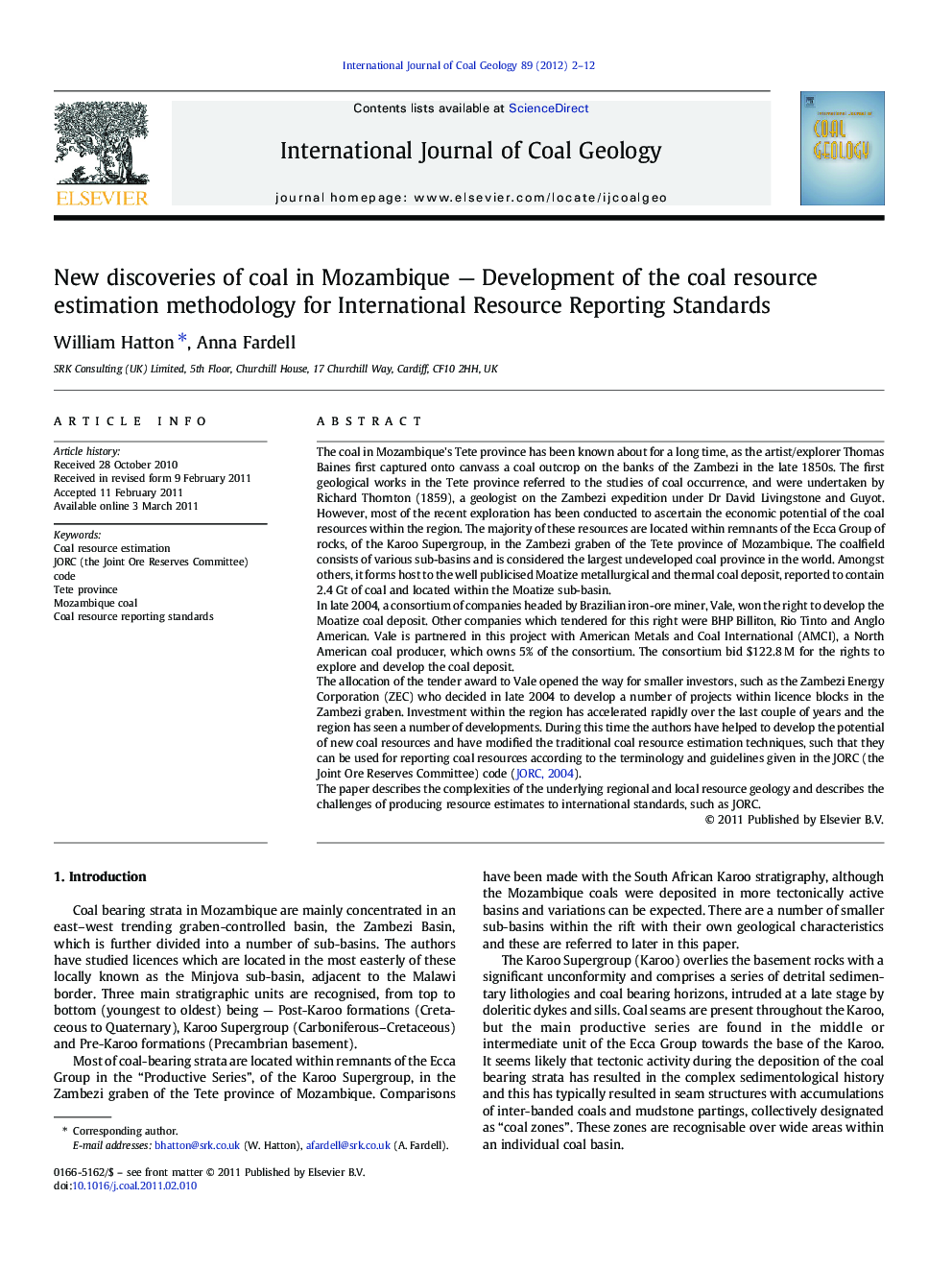| کد مقاله | کد نشریه | سال انتشار | مقاله انگلیسی | نسخه تمام متن |
|---|---|---|---|---|
| 1753593 | 1522603 | 2012 | 11 صفحه PDF | دانلود رایگان |

The coal in Mozambique's Tete province has been known about for a long time, as the artist/explorer Thomas Baines first captured onto canvass a coal outcrop on the banks of the Zambezi in the late 1850s. The first geological works in the Tete province referred to the studies of coal occurrence, and were undertaken by Richard Thornton (1859), a geologist on the Zambezi expedition under Dr David Livingstone and Guyot. However, most of the recent exploration has been conducted to ascertain the economic potential of the coal resources within the region. The majority of these resources are located within remnants of the Ecca Group of rocks, of the Karoo Supergroup, in the Zambezi graben of the Tete province of Mozambique. The coalfield consists of various sub-basins and is considered the largest undeveloped coal province in the world. Amongst others, it forms host to the well publicised Moatize metallurgical and thermal coal deposit, reported to contain 2.4 Gt of coal and located within the Moatize sub-basin.In late 2004, a consortium of companies headed by Brazilian iron-ore miner, Vale, won the right to develop the Moatize coal deposit. Other companies which tendered for this right were BHP Billiton, Rio Tinto and Anglo American. Vale is partnered in this project with American Metals and Coal International (AMCI), a North American coal producer, which owns 5% of the consortium. The consortium bid $122.8 M for the rights to explore and develop the coal deposit.The allocation of the tender award to Vale opened the way for smaller investors, such as the Zambezi Energy Corporation (ZEC) who decided in late 2004 to develop a number of projects within licence blocks in the Zambezi graben. Investment within the region has accelerated rapidly over the last couple of years and the region has seen a number of developments. During this time the authors have helped to develop the potential of new coal resources and have modified the traditional coal resource estimation techniques, such that they can be used for reporting coal resources according to the terminology and guidelines given in the JORC (the Joint Ore Reserves Committee) code (JORC, 2004).The paper describes the complexities of the underlying regional and local resource geology and describes the challenges of producing resource estimates to international standards, such as JORC.
Research highlights
► An active coal exploration case study.
► Application of JORC International Standards to developing coal resources.
► Analytical data exposed that has not yet been made public.
► Development of a workflow to analyse coal resources using computer modelling systems in mining.
Journal: International Journal of Coal Geology - Volume 89, 1 January 2012, Pages 2–12